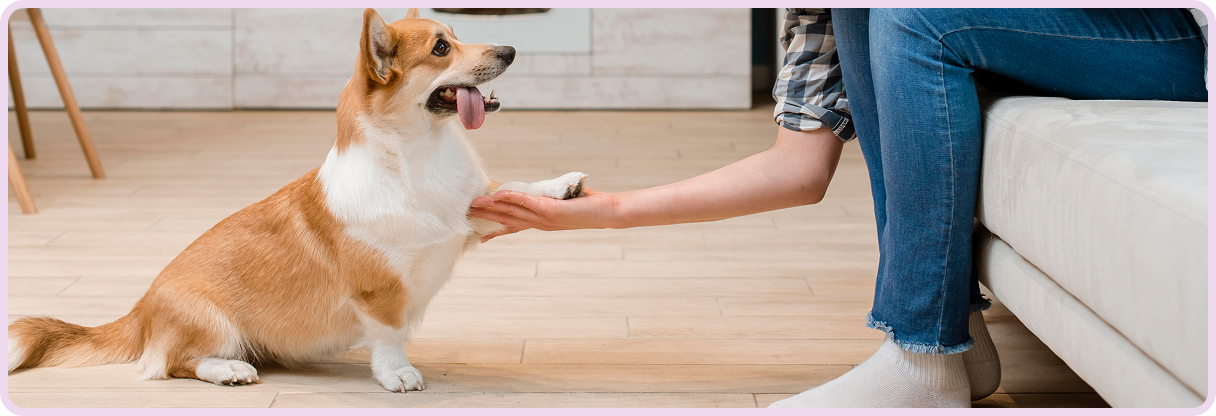Here’s how to get your house, and your mindset, ready:
1. Puppy-Proof Like a Pro (Not Like a Rookie)
Think of your puppy like a toddler with teeth. Anything at nose level is fair game.
Do this:
- Cords and cables: Tape them down or cover them. Chewing = fire hazard.
- Trash bins: Get lids or keep them out of reach. Puppies love garbage more than gourmet treats.
- Medications & chemicals: Lock them up. A single pill or cleaning agent can be fatal.
- Houseplants: Research yours. Many are toxic to dogs (e.g., aloe, philodendron, sago palm).
Pro tip: Get on your hands and knees and view your home from a puppy’s eye level. You’ll be shocked at what you see.
2. Create a “Puppy Zone”
Your new pup needs a safe space to decompress, rest, and learn the ropes.
Set up:
- A crate or playpen: This is not punishment—it’s their safe haven.
- Soft bedding: Make it cozy, but not your favorite blanket (accidents happen).
- Water bowl: Always accessible.
- Chew toys: Essential for teething and avoiding your furniture.
If you work from home, set up this zone where they can see you. Separation anxiety is real.

3. Stock Up on Essentials (Not Just the Cute Stuff)
You don’t need everything on the pet store shelf. But you do need a solid starter kit:
Essentials and why you need them:
- Collar & ID tag: In case they run, always have ID on them.
- Leash & harness: Skip retractables at first. Go for control.
- Food & treats: Start with what the shelter/breeder used to avoid tummy trouble.
- Puppy pads & poop bags: House-training = patience + cleanup.
- Shampoo & brush: Even short-haired breeds need basic grooming.
Bonus: Get an enzymatic cleaner. You’ll need it. Trust.
4. Set House Rules Early
Before your puppy arrives, decide on the rules—and make sure everyone in the house agrees.
- Furniture or floor? Be consistent.
- Sleeping in your bed or their crate? Once you say yes, it’s hard to say no.
- Meal times? Routine helps with digestion and discipline.
- Training words? Use clear, consistent commands (“sit” not “sit down”).
Confusion is the enemy of good behavior.
5. Find a Vet Before You Need One
Don’t wait until something goes wrong. Research local vets and book that first puppy checkup ASAP, ideally within a week of bringing your pup home.
Ask about:
- Vaccination schedules
- Deworming
- Microchipping
- Flea/tick prevention
This is also a great time to ask about diet, training, and spay/neuter timelines.
6. Plan for the First Few Nights
The first few nights are rough. For both of you. Be ready.
- Expect whining. Don’t punish it—comfort them without creating a dependency.
- Keep the crate near your bed the first few nights for reassurance.
- Stick to a bedtime routine: potty > water > settle in.
Stay calm, stay patient, stay consistent.
7. Start Socializing & Training Immediately
Socialization isn’t just for fun, it’s critical for preventing fear-based behaviors later.
- Invite friends over (once the vet gives the all-clear).
- Carry them around outside to see the world before they’re fully vaccinated.
- Start with basic commands: “sit,” “stay,” “come,” “leave it.”
- Use positive reinforcement. Never punishment.
Enroll in a puppy training class when they’re ready. It’s worth it.
8. Prep Emotionally, Not Just Physically
Puppies are cute chaos. They’ll test your patience, your sleep, your rugs, and your resolve. But with the right prep, you’ll raise a confident, happy, well-behaved dog, and you’ll be the kind of pet parent they deserve.
So take a deep breath. Hide your shoes. And get ready to meet your new best friend.
At Pawrpose, we’re here to help you build a life that’s better for pets and the people who love them.
Let’s make your home the kind of place your new pup will never want to leave.






